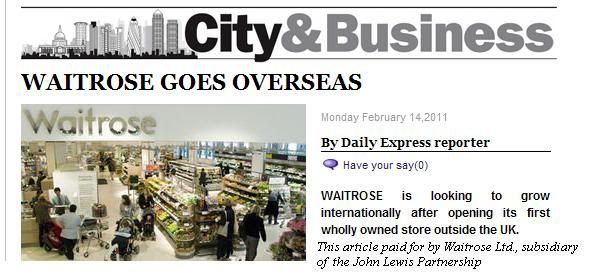 Twitter is quite transparent about when it's carrying out some corporate promotion. That little symbol beside someone I'm highly unlikely to follow suddenly turning up on my dashboard is reassuring - it's a respectable decision, and I can understand entirely their motivations, being as how they're still struggling with how to monetise this new phenomena.
Twitter is quite transparent about when it's carrying out some corporate promotion. That little symbol beside someone I'm highly unlikely to follow suddenly turning up on my dashboard is reassuring - it's a respectable decision, and I can understand entirely their motivations, being as how they're still struggling with how to monetise this new phenomena. At the same time, Ofcom had followed in the footsteps of American colleagues in February this year, and permitted the practice of Product Placement in British programming. The relaxation of rules was not complete; various harmful products such as weaponry, alcohol, cigarettes and - er - baby milk cannot be shown, and the placement must be within the limits of 'editorial justification', or relevancy to the show.
Many of the opposition arguments mounted fell on stony ground - traditional, conservative groups like the Church of England argued that it might 'destroy trust in broadcasters', but the appearance of Stella Artois in an episode of Eastenders rather pales in importance beside the Leveson Inquiry on a scale of betrayed consumers' indignation.

Perhaps a discreet caption above the editorial - "This Paper Supports Product Placement". Or for the more conscientious (i.e. those with the most blatant recycled PR statements) a whole new byline as illustrated?

Sounds like a good idea. People should be informed when they are seeing product placement and the press bigging someone up for money and when someone's being honest. And us amateur journalists would be less likely to spit venom at spin doctors and marketers who cross the line
ReplyDelete